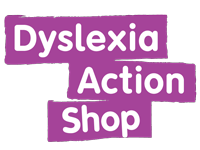This website uses cookies to ensure you get the best experience on our website. About consent.
CTOPP2 - Comprehensive Test of Phonological Processing, Second Edition, Product Range
Popular with professionals in psychology and education, this assessment is designed to measure reading-related phonological processing skills.
CTOPP2 - Comprehensive Test of Phonological Processing
Popular with professionals in psychology and education, the CTOPP2 assessment is designed to measure reading-related phonological processing skills.
What are the outcomes?
CTOPP2 has four principal outcomes which are to:
- identify individuals who are significantly below their peers in important phonological abilities
- determine strengths and weaknesses among developed phonological processes
- document individuals' progress in phonological processing as a consequence of special intervention programs
- serve as a measurement device in research studies investigating phonological processing.
Subtests
All subtests measure the ability to:
- remove phonological segments from spoken words to form other words (Elision)
- synthesize sounds to form words and nonwords (Blending Words, Blending Nonwords)
- select words with the same initial and final sounds (Sound Matching)
- isolate individual sounds within words (Phoneme Isolation)
- segment nonwords into phonemes (Segmenting Nonwords)
- repeat nonwords & numbers accurately (Nonword Repetition, Memory for Digits)
- rapidly name numbers, letters, colors & objects (Rapid Digit Naming, Rapid Letter Naming, Rapid Color Naming & Rapid Object Naming)
What's included?
Items you will find in the full kit include:
- Examiner’s Manual
- 25 Examiner Record Booklets for ages 4-6
- 25 Examiner Record Booklets for ages 7-24
- Picture Book
- online access to supplemental material
- all in a sturdy storage box.
Supplementary Products
- Examiner Record Booklets Ages 4 - 6 (Pk 25)
- Examiner Record Booklets Ages 7 - 24 (Pk 25)
- Supplemental Subtest(online access) inc. Blending Words, Memory for Digits, Nonword Repetition
- Supplemental Subtest(online access)inc. Blending Non words, Segmenting Non words
Description
CTOPP2 comprises of the following composites:
Phonological Awareness Composite Score (PACS)
Provides a standard scores of three subtests; Elision, Blending Words, and Sound Matching for 4 through 6 year olds. As well as, Elision, Blending Words, and Phoneme Isolation for 7 through 24 year olds. It examines the awareness of and access to the phonological structure of oral language.
Phonological Memory Composite Score (PMCS)
Offers a standard scores of two subtests - Memory for Digits and Nonword Repetition for all individuals. The PMCS represents the examinee's ability to code information phonologically for temporary storage in working or short-term memory.
The Rapid Symbolic Naming Composite Score (RSNCS)
Sets the standard scores of two subtests; Rapid Digit Naming and Rapid Letter Naming – for all individuals. The RSNCS measures the examinee’s ability to include efficient retrieval of phonological information from long-term or permanent memory and execute a sequence of operations quickly and repeatedly.
Rapid Non-Symbolic Naming Composite Score (RNNCS)
Gives a standard scores of two subtests; Rapid Color Naming and Rapid Object Naming and offers an alternative for young children, ages 4 through 6 year olds, not familiar with letters and numbers. The RNNCS measures the examinee’s ability to include efficient retrieval of phonological information from long-term or permanent memory and executing a sequence of operations quickly and repeatedly using objects and colors.
The Alternate Phonological Awareness Composite Score (APACS)
Provides an alternate composite for measuring phonological awareness is available for 7 through 24 year olds. It is formed by combining the scaled scores from Blending Nonwords and Segmenting Nonwords. The APACS measures the examinee’s phonological awareness exclusively with nonwords
Authors: Richard K. Wagner, Joseph K. Torgesen, Carol A. Rashotte, and Nils A. Pearson
Ages: 4-0 through 24-11
Testing Time: 40 minutes
Administration: Individual
Published Date: 2013
Publisher: Pro-ed
Looking for ideas to manage progress?
Take a look at our:
- Resources and Interventions - we are developing new relationships with businesses that will help delivery progress.
- What's New - we add all of our new products here so its a good place to keep up to date
- You can also keep up to date by signing up to our newsletter 'Taking Stock' with news on all things dyslexia and more in your account by signing in [here].
Want to qualify to use this test?
Real Group offer a range of courses that will enhance your assessment skills, develop your role within SEN and ultimately enable your students to make effective progress, helping them achieve their goals.
- Take your competence in psychometric testing to the next level with the gold standard qualification for the education profession – Certificate of Competence in Educational Testing – set by the British Psychological Society (BPS). To access the tests you need for your course see the Study Purchase Scheme.
- Looking to become an Access Arrangements Assessor? Learn how to use psychometric testing instruments effectively (CCET) and apply them in exam access arrangements (AAC) confidently and competently with the Certificate in Psychometric Testing, Assessment and Access Arrangements (CPT3A).
- Already a Specialist Teacher and looking to become a specialist assessor? Check out the Level 7 Professional Certificate in Assessment Practice for Dyslexia and Literacy, Module E: Assessment of Specific Learning Difficulty (Dyslexia) specifically looks at this assessment. Get 10% off of your copy with the Dyslexia Action Loan Scheme.


